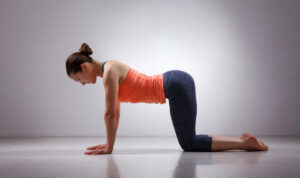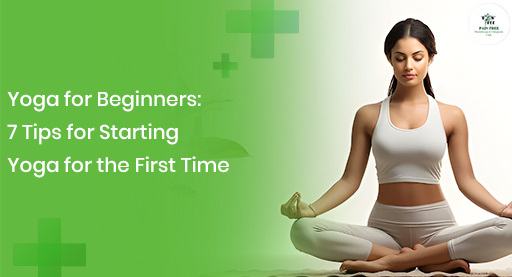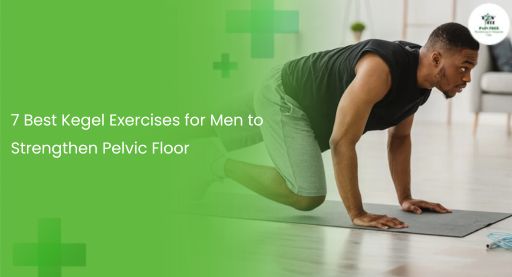Yoga for Beginners: 7 Tips for Starting Yoga for the First Time
So, you’ve decided to try yoga? That’s awesome! Whether you’re looking for a new way to relieve stress, improve flexibility, or just add a little calm to your chaotic life, yoga’s got your back. But, hey, if you’re a total beginner, you might be feeling a bit overwhelmed or unsure of where to begin. Don’t worry, we’ve all been there!
Starting yoga for the first time doesn’t have to be complicated, though. In fact, it’s a journey that should be as enjoyable as it is transformative. So, if you’re ready to roll out that mat and dive into the world of yoga, here are 7 tips for starting yoga for the first time designed to help you feel confident, comfortable, and eager to keep going!
Yoga for Beginners: 7 Tips for Starting Yoga for the First Time
When it comes to yoga for beginners, starting slow is key. It’s easy to get caught up in the excitement and try to push yourself too hard, but yoga is all about patience, self-awareness, and breathing through each moment. Ready to jump in? Let’s break down the top 7 tips you need to know!
1. Start with Basic Poses (No Fancy Stretches Yet!)
It’s tempting to jump straight into advanced poses when you see all the incredible flexibility on social media, but trust me you’ll get there, but not just yet. Yoga for beginners is all about mastering the basics. Focus on poses like Downward Dog, Cat-Cow, and Child’s Pose. These foundational postures will give you the strength, balance, and confidence to progress as you go along.
- Downward Dog: A staple pose that stretches the back, hamstrings, and arms while building strength.
- Child’s Pose: A restorative pose that helps you relax, stretch your hips, and calm your mind.

- Cat-Cow: A fluid movement that increases spinal flexibility and warms up the body.

Take your time with these basics. The more comfortable you get, the more complex poses will feel within your reach.
2. Find the Right Class or Instructor
So, you’ve got the yoga mat, but now what? Choosing the right class and instructor can make or break your experience. Look for a beginner-friendly class where the instructor takes the time to guide you through each movement. Yoga isn’t about rushing, and it’s okay to take your time learning the ropes.
Ask about the class style, too. Hatha and Vinyasa are generally great for beginners, while something like Ashtanga might be a bit too intense at first. Find a teacher who is patient, communicates clearly, and is genuinely interested in helping you grow.
3. Listen to Your Body (It’s Your Best Teacher)
One of the key takeaways from Yoga for Beginners: 7 Tips for Starting Yoga for the First Time is to trust your body. Yoga isn’t about pushing yourself to the limit or competing with the person next to you. It’s about finding what works for YOU.
If a pose doesn’t feel right, back off a little. It’s normal for certain poses to feel challenging in the beginning, but pain is a sign that you need to adjust your position or take a break. Try to be mindful of your body’s signals and respect your limits.
4. Invest in the Right Gear (Comfort is Key)
You don’t need a fancy wardrobe to start yoga, but having a few essentials can make your practice more enjoyable. Here’s what you’ll need to get started:
- Yoga Mat: A non-slip mat will keep you steady in poses and prevent injuries.
- Comfortable Clothes: Opt for breathable, stretchy clothes that let you move freely. Avoid overly baggy clothing that might get in the way.
- Yoga Blocks: These props can help support you in certain poses, making them more accessible.
By investing in a few simple pieces of gear, you’ll feel more comfortable and focused during your practice. Plus, you’ll be ready for that advanced pose when it comes around!
5. Don’t Worry About Perfecting Every Pose
Let’s face it no one nails every pose on their first try. It’s tempting to compare yourself to the experienced yogis around you, but don’t get discouraged. Yoga is about progress, not perfection.
When starting yoga for the first time, remember that it’s okay to modify poses, take breaks, or simply focus on your breathing. Everyone’s journey is different, and yoga isn’t a race.
6. Focus on Your Breath (It’s Everything!)
Breathing in yoga isn’t just for relaxation; it’s the key to connecting your body and mind. Practicing deep, controlled breathing during your poses helps you stay calm, focus your energy, and prevent injury.
Inhale deeply through your nose, and exhale fully through your mouth. This rhythmic breathing will help you flow smoothly from one pose to the next and keep you grounded.
A good tip for beginners is to follow your instructor’s breathing cues. Soon enough, you’ll start to notice how it helps you stay present and focused on each movement.
7. Stay Consistent, But Be Kind to Yourself
Yoga isn’t something you master overnight, and that’s perfectly okay! If you miss a class or have a rough day on the mat, don’t beat yourself up. Yoga for beginners is all about consistency and finding a practice that feels good to you.
Aim to practice regularly, even if it’s just 10-15 minutes a day. The more consistent you are, the more you’ll start noticing the benefits mentally, physically, and emotionally.
FAQs About Yoga for Beginners
- How often should I practice yoga as a beginner?
You don’t need to practice yoga every day as a beginner. Two to three sessions a week is a good starting point. As you get more comfortable, you can increase the frequency to daily sessions. - Is yoga only about flexibility?
No way! While yoga does help with flexibility, it also focuses on strength, balance, and mindfulness. It’s a full-body workout for your mind and body. - Can yoga help with stress?
Absolutely! Yoga is known for its ability to reduce stress and promote relaxation. The combination of physical movement and deep breathing helps calm the nervous system and clear the mind. - Do I need to be fit to start yoga?
Not at all! Yoga is for everyone, regardless of fitness level. You can modify poses to suit your body and gradually build strength and flexibility over time.
Conclusion
Starting yoga for the first time is an exciting adventure, and it doesn’t have to be intimidating. With these 7 tips for beginners, you’re well on your way to developing a solid practice that will support both your body and mind. Remember, yoga is all about progress, not perfection so embrace the journey, listen to your body, and enjoy the ride.
Ready to get on your mat? Take a deep breath, and let’s do this! Namaste.












